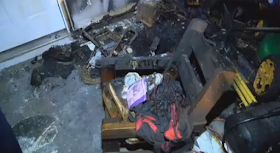OSHA fines TX contractors $121K for trench hazards
By Kim Slowey | September 8, 2016
Dive Brief:
The Occupational Safety and Health Administration has issued two Texas contractors — Austin Constructors and Muniz Concrete and Contracting — trench-related safety violations and fined them a total of $121,343.
OSHA issued Austin Constructors, which garnered the lion's share of the fine ($113,486), one willful and three serious violations for failing to utilize sufficient trench protection on the Austin job site, failing to secure power lines and loose soil properly in the trench, and failing to furnish guardrails or walkways over the trench.
The agency also issued Muniz ($7,857) one serious violation for leaving employees vulnerable to cave-ins at the street- and utility-related project.
Dive Insight:
OSHA said it launched an investigation at the site as part of its National Emphasis Program for trenching and excavations, and Area Director Casey R. Perkins said in a press release that the companies were "fortunate" the agency caught the violations before employees were killed or injured. Perkins added that 54 annual fatalities result from excavations.
Earlier this month, OSHA cited another Texas contractor, Renda Contracting, with several excavation- and trench-related violations on a drainage project in Houston and fined the company $124,300. The agency said it had investigated Renda six times in the last 10 years, inquiries that all resulted in citations and fines. Renda officials said the company, which has performed hundreds of millions of dollars in work for the city of Dallas over the last several years, would contest OSHA's findings.
Unprotected construction site trenches and excavations can be particularly deadly, and the legal tide could be turning against employers who do not take adequate safety measures. In June, a Manhattan judge found general contractor Harco Construction guilty of second-degree manslaughter, criminally negligent homicide and reckless endangerment in the trench-collapse death of worker Carlos Moncayo. Cases against Moncayo's direct employer, Sky Materials Corp., and supervisors from both Sky and Harco are pending. As part of Harco's sentence, the judge ordered the company to pay for a television safety ad campaign, but Harco said it would not comply and planned to appeal the verdict.
The New York sentence does not include the OSHA penalties assessed against both Harco and Sky, an even split of a total fine of $280,000. Had the incident happened after the agency's revised penalty structure went into effect, the companies could have found themselves paying up to 78% more in fines.
Recommended Reading
OSHA: More than $121K in OSHA fines proposed for construction companies that exposed workers to trench cave-in hazards at Austin project
KXAN: Excavation project collapses, killing one in Lockhart
OSHA: OSHA: Meatpacking District fatality 'completely avoidable'

































